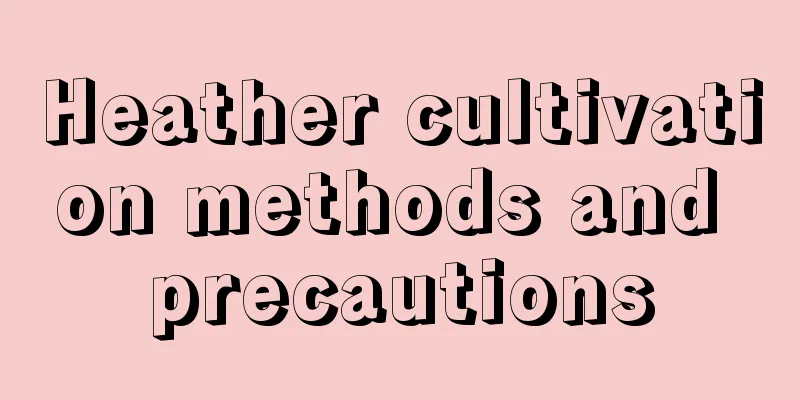Cultivation methods and precautions of the fortune tree

1. Maintenance methods1. Temperature: It can be seen from its distribution of origin that it has high temperature requirements and prefers higher temperatures. Generally speaking, it can be kept between twenty-five and thirty degrees. Furthermore, its cold resistance is not very good. Therefore, in winter, try not to let the temperature drop below 15 degrees. There is basically no need for adjustment in summer. 2. Light: It likes light and requires sufficient sunshine. However, when the temperature reaches above 30 degrees, it is best to provide shade, otherwise its leaves may be burned. At this time, you can put it in a semi-shaded place, but not completely dark. In other seasons, try to place it in a place with good diffuse light so that it will be more ornamental. 3. Watering: It likes moisture, but is afraid of waterlogging. Therefore, do not give too much water, just keep it slightly moist during the growth period. In addition, remember to spray water in summer. 4. Fertilization: It does not require much fertilizer. Fertilization can only be done from May to September. It can be done once every half a month, for example, using cake fertilizer water, etc. But the concentration must not be too high. 2. Breeding techniques1. Reproduction: Cuttings are commonly used. It can be done from spring to autumn, but April to May is the most suitable. Choose branches that are 15 to 25 cm long and have at least three nodes as cuttings. Sand mixed with vermiculite can be used as the substrate. Then, keep the temperature at 20 to 30 degrees and the shading level at 40 to 50 percent. After about a month, it will take root. 2. Repotting: Try to change the soil every year, which will be more conducive to its growth. Generally speaking, it can be prepared with leaf mold, garden soil, river sand and base fertilizer. If it is a very large potted plant, it can be replaced every two years. 3. Problem diagnosis and treatment1. Disease: The most important one is "leaf spot disease". Even if only one or two diseased leaves are found, they must be dealt with in a timely manner, sprayed with carbendazim for prevention and control, and the diseased leaves must be handled properly. 2. Pests: Especially in summer, it is the season when pests appear most frequently. The main harm is caused by some "scale insects", which can be controlled by using cypermethrin. IV. Other issues1. Toxicity: Not only is it non-toxic, but it also has a very strong ability to absorb harmful gases. 2. Can it be raised at home: Very suitable. It is an ornamental plant. Moreover, it has a purifying effect. |
>>: Cultivation method of Hovenia dulcis
Recommend
Polygonatum sibiricum planting technology
1. Site selection When it comes to growing Polygo...
How to grow Boston fern
1. Temperature It has a certain degree of high te...
What are the cultivation methods and precautions of Daphne koreana
Cultivation method of Daphne koreana Daphne korea...
Can the fortune tree be placed in the bedroom? How to maintain it at home
1. Can it be placed in the bedroom? The money tre...
How to grow green radish in water in winter
1. Ensure the temperature The most important thin...
Can bamboo palm be sown?
Conditions required for seed propagation of bambo...
Four seasons maintenance method of ball pine
Spring and Autumn Maintenance of Ball Pine Spring...
The role and value of eyebright
Medicinal Value of Eyebright After being harveste...
What should I do if the leaves of the emerald green grass wilt or turn yellow?
1. Proper shade Green cloud grass is suitable for...
The correct way to prune a fortune tree
As a perennial evergreen shrub , the money tree g...
How to trim the gardenia to look good
When is the right time to prune the gardenia? The...
Does rosemary like sun or shade? Does it like sunlight?
Does Rosemary prefer shade or sun? Rosemary has h...
What is the symbolism and meaning of the flower language of Dendrobium?
Flower language of Dendrobium Welcome, dear. Kind...
Black Prince's Beheading Method
Plant preparation This is a piece of flesh that h...
Mint and mugwort, repelling insects and benefiting the body and mind
Vanilla scent repels mosquitoes but attracts butt...









